On the shinkansen to Kyoto
Mon 5 Sep 2011 by mskala Tags used: travelI am writing this draft on the shinkansen from Tokyo to Kyoto, though I probably won't have a chance to upload it until I reach Nara later this afternoon. Oy, such an adventure I am having.
I lost the photo, but I wanted to mention the food on the airplane. It turns out my Air Canada flight from Vancouver to Narita really was operated by Air Canada - the code sharing went in the other direction from what I'd expected. I don't usually fly Air Canada, and am not accustomed to getting food on airplanes anymore, but this flight did feature not one but two hot meals, both of which had been localized. First, something I overheard someone refer to as "sukiyaki" but the airline wisely just called "beef." It was, pretty clearly, an attempt at a compromise meal that would violently offend neither Japanese nor Westerners. It actually tasted good, but made up for that on texture.
The second meal was penne pasta with a tomato-based meat sauce. The localization consisted of issuing us each with a sachet of soy sauce as well as the standard condiment pack. (No chopsticks - you could poke someone's eye out!) This illustrates two horrifying facts about international relations:
- Air Canada thinks Japanese people would pour soy sauce onto pasta that already has tomato-based meat sauce on it.
- Some Japanese people probably would.
To recap events upon landing, I sailed through Customs and the railway ticketing process, and then I got off the Narita Express at the wrong station, Shibuya instead of Shinjuku. What can I say? They both start with し. That in itself would not be such a big problem because I could take the local train the rest of the way - it's just three stops and that train doesn't require reservations. But in the confusion, I lost my camera. That was a bit of a significant issue (大変 as they say here, taihen written with characters that mean "big pervert") because taking lots of photos was a big part of my plan for the trip. So this taihen raised my stress level considerably.
Also, I had been awake about 36 hours at that point, after four hours of sleep, and I was pretty dehydrated. I couldn't buy a drink from the vending machines that are endemic here, because I had no Japanese money in denominations small enough. And night had fallen. Since hallucinogens administered by dart gun are illegal in Japan, the Shinjuku merchants do their best at night with flashing lights, megaphones, and underdressed girls. I wandered around Shinjuku with my large unwieldy suitcase, getting more and more confused and freaked out, until I eventually located the entrance of Hanazono Jinja - one of many landmarks I had memorized, but the only one I was actually able to find.
It happens that Hanazono Jinja has three entrances. Fortunately, the one I found was the correct one. And then all the navigation difficulty vanished; from the shrine, I knew exactly how to get to my hotel.
It's a shame I don't have photos of the front of the Hotel Listel Shinjuku, because I could point out that their logo inauspiciously resembles the international "radiation warning" symbol. You'll have to use your imagination. I also will leave to your imagination the toilet except to say that one of its many buttons was illustrated by an icon showing, in silhouette but with the following details recognizable, a young girl with a ponytail, in a sitting position, being lifted bodily in the air by a powerful jet of water sprayed into her bottom, much as we sometimes imagine sailors elevated by a whale's spout. I did not make that up, but I have no photo to prove it. You can probably buy manga of it, if that's your thing.
I did not press that button.
All the signage and guest information materials were humorously mistranslated, too, but that's common enough that I don't need to provide examples. It is worth mentioning that the Internet access at the hotel was very good even if (and this one was partially my own fault) the authentication screen did end up eating one of my posting drafts; and the room was spacious especially given my expectation of Japanese hotels. My overall rating of the Hotel Listel Shinjuku would be favourable.
I had promised that on arrival I would phone one of my former tutors from when I was taking Japanese lessons in Toronto, and even though by the time I got to the hotel I was feeling very tired and somewhat ill, I did so. I was also desperate for some friendly human contact. After humorous bilingual email-and-telephone tag, we met at the entrance of Hanazono Jinja (and it was only when I got there this time, that I finally realised there is more than one entrance, so you can easily imagine what came next) and we went to a restaurant where there is a wireless tablet PC on every table and you put in your order on the touch screen and it gets sent to the kitchen over the network. For all I know, the cooks are all cyborgs with XML-RPC running natively on their brains. Everything is high-tech here.
Unfortunately, I was not in any shape to enjoy food and drink. There's a paradoxical situation with hunger and dehydration combined - you know you need liquid, you know you need calories, but your stomach is so messed up you can't really take much in. Or at least that's how it is for me. But I managed one beer and at least trying a little bit of each of several food items, without vomiting all over her, so I guess I did pretty well. And I really did appreciate the companionship, for the good of my mental health.
Apropos of hydration, I'd like to mention that it seems incredibly hard to drink enough fluids in this climate and that fully justifies the density of drink vending machines. I read the weather report before coming here and saw temperatures comparable to Summer in Winnipeg, but whether it's the humidity or some other factor, it feels much hotter. I sweat heavily, constantly, and that's why the vending machines are valuable. On the plus side, losing so much water through my skin reduces how often I need to deal with the local plumbing.
They have alcohol (mostly beer) in the vending machines too, and I think that's a wonderful idea we should implement in Canada. You may say teenagers would buy it, but that ties in well with my other idea about eliminating the drinking age; and you may say homeless people would buy it, but if so, maybe then homeless people wouldn't end up drinking mouthwash and rubbing alcohol which are much worse, and then I'd be able to buy mouthwash and rubbing alcohol off the shelf in the Shopper's Drug Mart as God intended instead of their having to be heavily controlled substances to keep them out of the hands of homeless people. I think it would all work out quite well.
I went back to my hotel, and budgeted seven and a half hours for sleep, though in fact I only really slept for a fraction of that. Still, the fact I got any sleep at all has raised my spirits and my hit points a whole lot.
I got up a little after six, poked around on the Net, showered (the shower/bath section of the integrated bathroom unit was much more comprehensible than the toilet section) and checked out. I think I left a copy of my itinerary in my hotel room; not a problem because I'm using another copy, but I hope the hotel staff don't find it and worry needlessly that I will be lost without it. Then I attempted to buy a new camera. It is worth mentioning that not only is Shinjuku basically the digital camera capital of the world, but also, the labels on the accessories of my lost camera all indicate it was manufactured by the Panasonic electronics company of Shinjuku, Japan. So I got on Google Maps, found a large camera store near the station, found its Web site, and poked around on there until I found the nearest possible equivalent of the camera I'd lost. Of course, that worked out to be the lowest-end model the store carried in the Panasonic Lumix line, and it was still a step above (in particular, has more megapixels than) my previous camera.
Really, I should have thought of this before coming; even if I hadn't lost it, it just doesn't make sense to buy a camera in Canada and bring it to Shinjuku. I should have just planned on bringing money and buying one on this side.
I wanted to leave my large suitcase in a locker at the train station while I went shopping, and that proved quite difficult. Everything in Japan is smaller than elsewhere (drink cans, cell phones, human bodies, and everything scaled to fit human bodies), except for a few things that are freakishly huge (such as some but not all vegetables, ice cream servings, schoolgirls' socks, and raccoon-dogs' testicles). This applies to luggage. As a result, most banks of luggage lockers do not include any into which my large suitcase will fit. I had to enter the fare zone and random-walk until I found a locker I could actually use.
ETA: yeah, I've been told that girls don't really wear those socks anymore, their having gone out of style many years ago, but I saw it today. Maybe she was wearing her mother's socks.
Compared to finding the luggage locker, finding the store was easy. I think that not only did the kami of Hanazono Jinja smile on me (be assured I made an offering there the previous night, as soon as I acquired coins), but also, Shinjuku is just a whole lot more reasonable by daylight. Then I had to wait for it to open at 9:30. I had written down exactly what I wanted, so it only remained to explain to the saleswoman in Japanese that yes, I really did want that exact model, even though its firmware had no English-language user interface and it did not come with an English-language instruction booklet. Thing is, the more recent models (which include some English-localized ones) all use touch screens instead of buttons, and the reviews I've read suggest that although the touch screens make possible a lot of complicated editing features, they are also annoyingly easy to activate by mistake when you're just doing very simple auto-everything snapshots. I wanted the lowest-end model, which still has buttons; as I said to her 「日本語でも」 (nihongo demo, "even though [it is] Japanese-language").
Just before I went to the store I tried to get more cash at the 7-11 and my main bank card was denied. That might have been predictable since I didn't do anything to notify the bank that I would use that particular card on my trip. I guess it's another thing I will have to sort out when I'm back in Canada. Fortunately, I did notify the banks for both credit cards, and the first of those that I tried still worked, so I guess I can get cash advances and pay them off immediately until I can get my debit card working again.
ETA: I later figured out that this was because of the per-day cash limit on my card - which is based on midnight-to-midnight "days" at the bank's head office in Toronto. So it was still the same "day" as my previous withdrawal, the total of the two would put me over, and that's why the transaction was denied. I'm told that if you have a Japanese bank card, there's no per-day limit but you aren't allowed to withdraw more than one million yen (equivalent to about $13,000) in cash per transaction. I'm not sure I like that, because I see the per-day limit (even if it inconvenienced me this time) as being mostly for my own protection: it makes it hard for someone who obtains my card and PIN to drain my account too fast. But they don't worry about such things in Japan because crime is illegal in Japan.
Then having bought the camera, I had to sit down and figure out enough of its Japanese interface to use it (easy, since I already knew how to use the very similar previous one). The battery it came with, did not come charged, but as I think I mentioned, I had the spare battery from the other one and that worked fine. And I found that I still had enough time to make it back to Hanazono Jinja and take some photos, which see.
As I write this draft I don't know who is enshrined at the main shrine of Hanazono, though the smaller subsidiary shrine obviously contains Inari (recognizable by the fox statues and corridor of torii gates - see photos). I will fill in some details here once I'm on the Net.
ETA: it appears that the main kami enshrined at Hanazono Jinja is the deified spirit of an Imperial prince mentioned in the Kojiki, Yamato-takeru-no-miko. See these notes about him, which describe how he received that title in recognition of his brave deeds killing enemy leaders while disguised as a young girl - which makes it fitting that he is protector of a part of the city that includes the world-famous Kabukicho red-light district, for centuries the home of Tokyo's drag shows.
Back at Shinjuku Station after taking those photos, it was absurdly difficult to find my luggage locker. Bear in mind that it was pretty hard just to find any luggage locker big enough for my bag; now I was not only looking for some extra-large luggage locker in general, but the specific extra-large luggage locker into which I'd locked my bag. I had carefully memorized its location, but everything looks like everything else inside a JR station. The station map was no use at all. Ihe map combines all levels of the station in a single three-dimensional view, the maps posted on the walls are oriented at random (neither "north is up" nor "the direction you are facing is up"), and I'm not convinced the map I downloaded from the Web was even accurate. But I did find my luggage, and I got onto the Chuou Line Rapid train to Tokyo all right, and in Tokyo it was not difficult to buy a lunch and get on the shinkansen. So things are looking good at this point. Now, to eat my lunch.
Lunch, from a convenience store at the station: a combination of rice, teriyaki chicken, scrambled egg, a boiled egg from some sort of bird but evidently not a chicken because it was so small - maybe a quail - and a sort of meat patty, type of meat unknown but chicken would be a good guess. I think this is basically what they call a parent and child plate. (Chicken and egg, get it?)
My photos taken though the train window aren't very good, but the landscape here is notably different from landscapes in other places I've seen. Outside the cities, you have a flat level which is rice fields and irrigation canals, and then hills and mountains poke up out of it like islands poking up out of water. Very much like that, I guess, since the rice fields are flooded at surface level, but they do also have a solid surface under the water and the interesting thing is that that's all on one level - none of the terraced rice fields I've see in pictures from other parts of Asia. The rows of plantings look mechanical, but I've seen people harvesting by hand. I don't know if that's a universal practice.
The settlements are all scattered among the rice fields; they clump on the small scale but not on the large scale. And there are no buildings on the hills, which are forested and a different shade of green, so the hills stand out against the rice fields as sharply defined chunks of a totally different terrain type. Oil and water. It really looks like something that would come out of an algorithmic terrain generator.
Architecture has characteristic quirks. Rural houses often, though not always, have ceramic-tile roofs. I see rows of houses all with identical television antennas of a style I don't recognize (probably terrestrial digital TV), all pointed in the same direction. Tall apartment buildings usually feature a specific type of squared-off spiral stair, with solid walls developed as railings - even on buildings with so many floors it's hard to imagine that anybody climbs those stairs on a routine basis. But they look too solid to be fire-escape stairs. Is that in fact what they are, and the building codes just require fire escapes to be incredibly solidly built? Or do people really climb those stairs routinely? Small towns are built on more solid, and relatively hilly, terrain, with stairs and retaining walls all over the place. They look just like small towns in Miyazaki anime.
Shinjuku
Shinjuku
Shinjuku
Hanazono Jinja signboard
Hanazono Jinja entrance (main)
Purification font, Hanazono Jinja
Main building, Hanazono Jinja
Inari shrine at Hanazono Jinja
Fox statue, Inari shrine at Hanazono Jinja
Torii, Hanazono Jinja
Lion statue, Hanazono Jinja
Uniformed Japan Rail staff
Platform at Jouyou Station
Jouyou Station signboard
note squared spiral stair
rapid train to Nara arriving in Jouyou
Rare clearing of bamboo forest
3 comments
Matt - 2011-09-05 16:12
If you make it easy for someone who finds your lost stuff you'll have a better chance at recovering it. Write out your contact info onto a piece of paper and take a picture of it. Include the dates and contact info of the locations you will be staying at. A self portrait is a good idea too. Doubly so in your case because the tall white bald guy is easy to spot in a crowd of short Asians. "Reward of ___ to anyone who recovers this lost camera" doesn't hurt either.
Steve - 2011-09-07 05:41
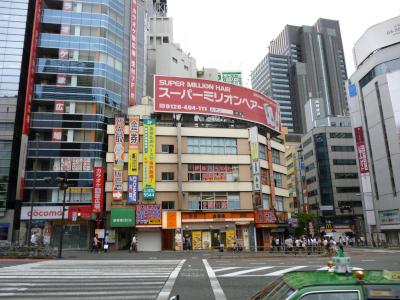
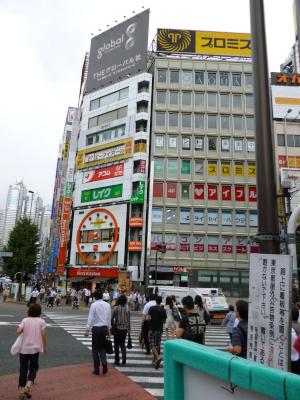
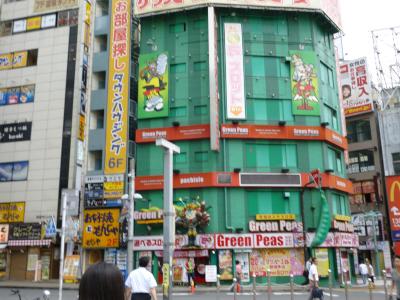
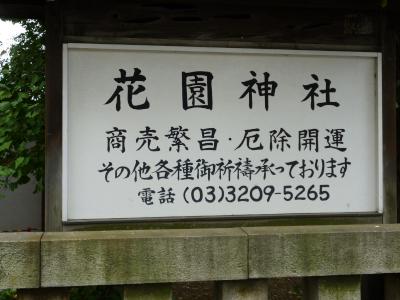
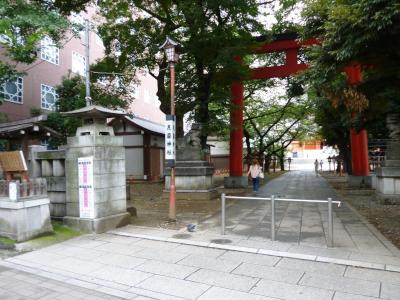
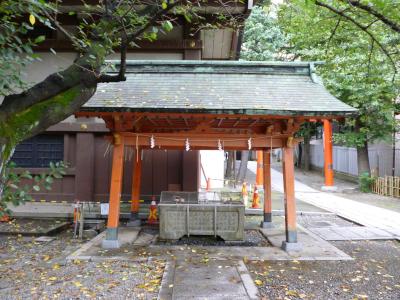
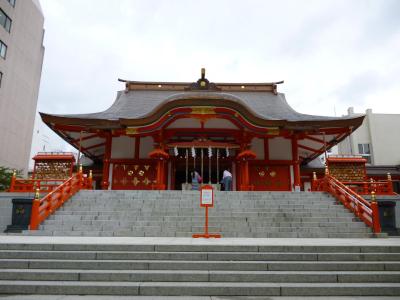

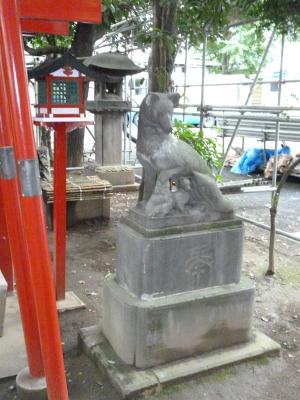
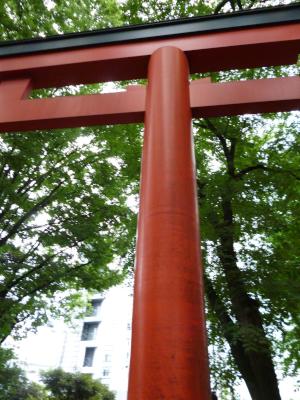
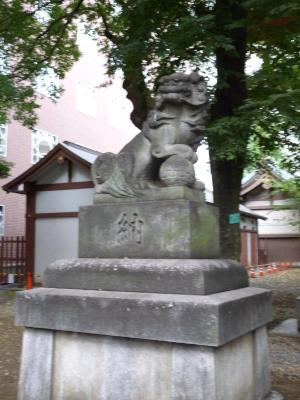
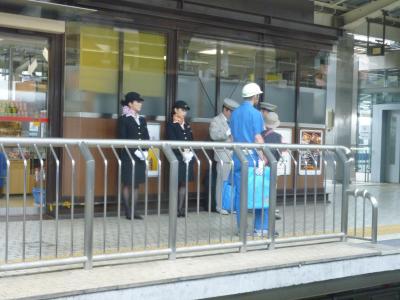

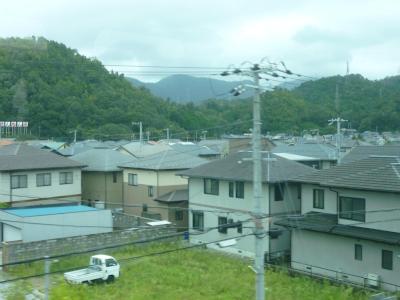




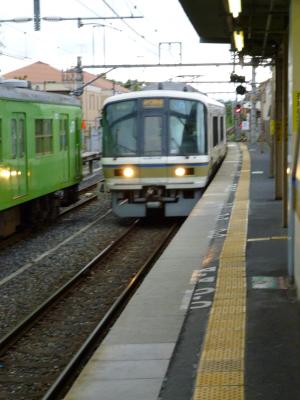


1. Air Canada thinks Japanese people would pour soy sauce onto pasta that already has tomato-based meat sauce on it.
2. Some Japanese people probably would."
Ha! Your Virgo rising was loud and clear there. I wonder if you'll become more Cancerian in Japan.
Axel - 2011-09-05 11:17